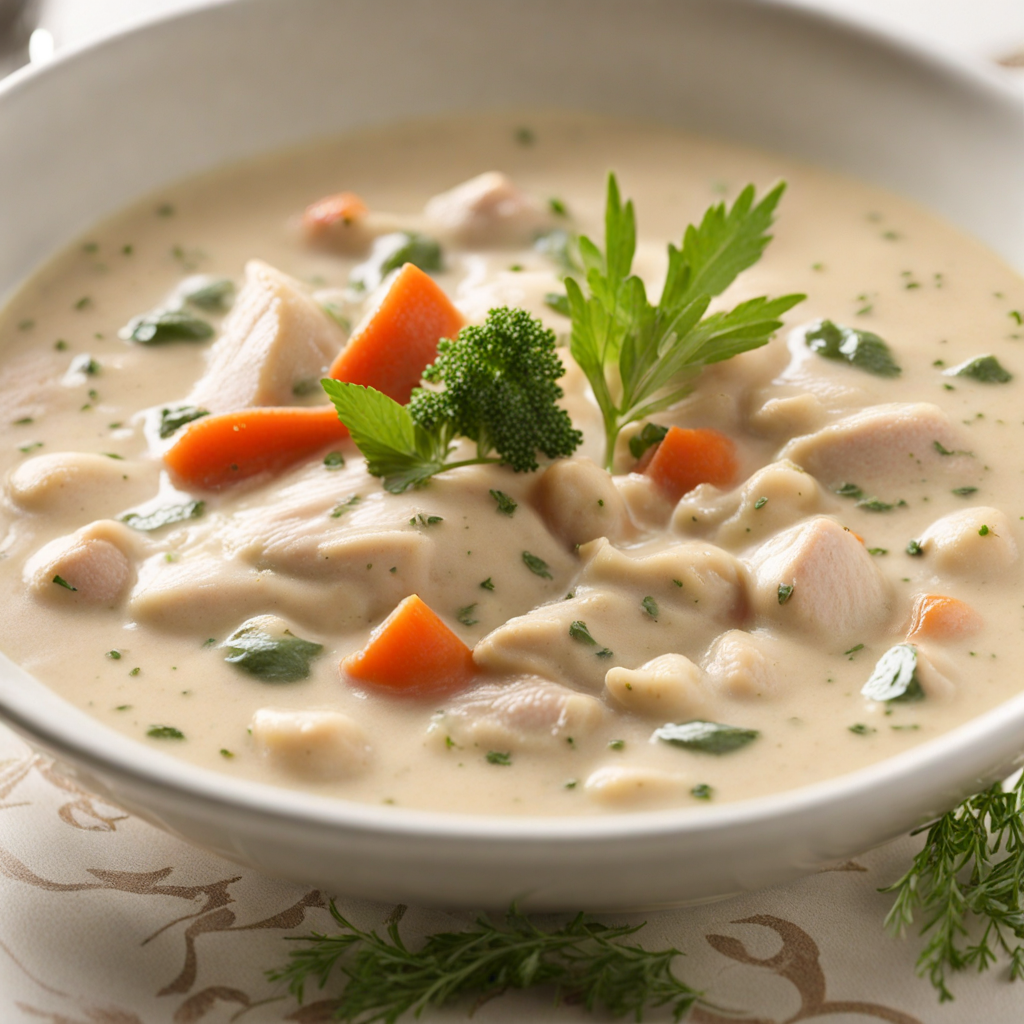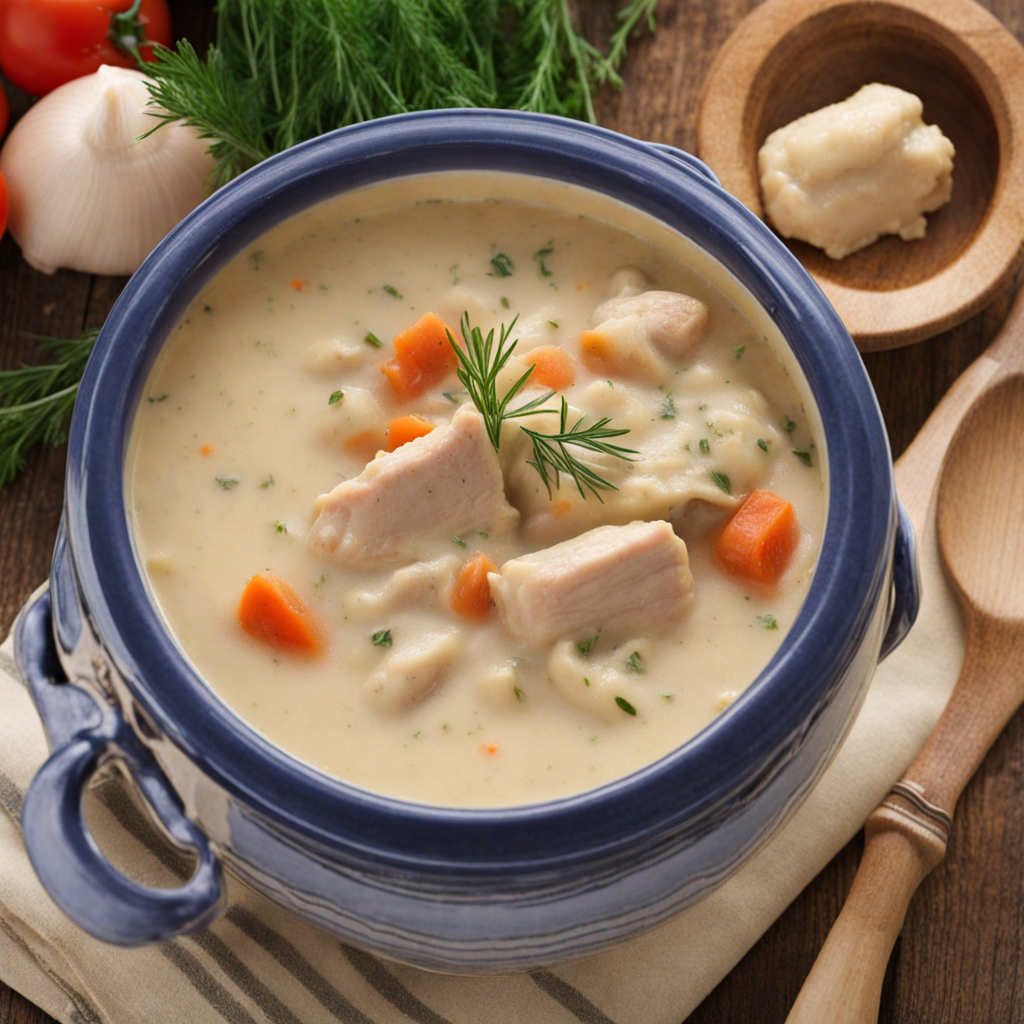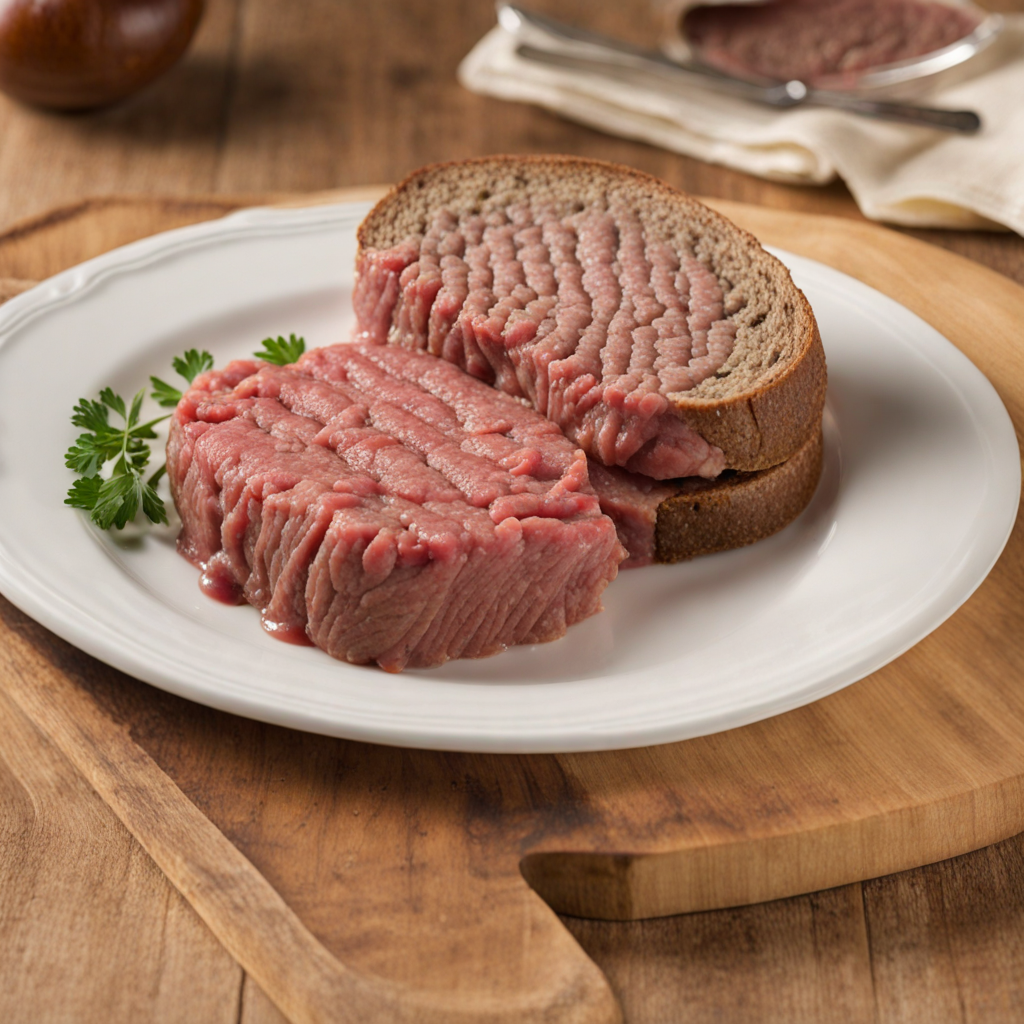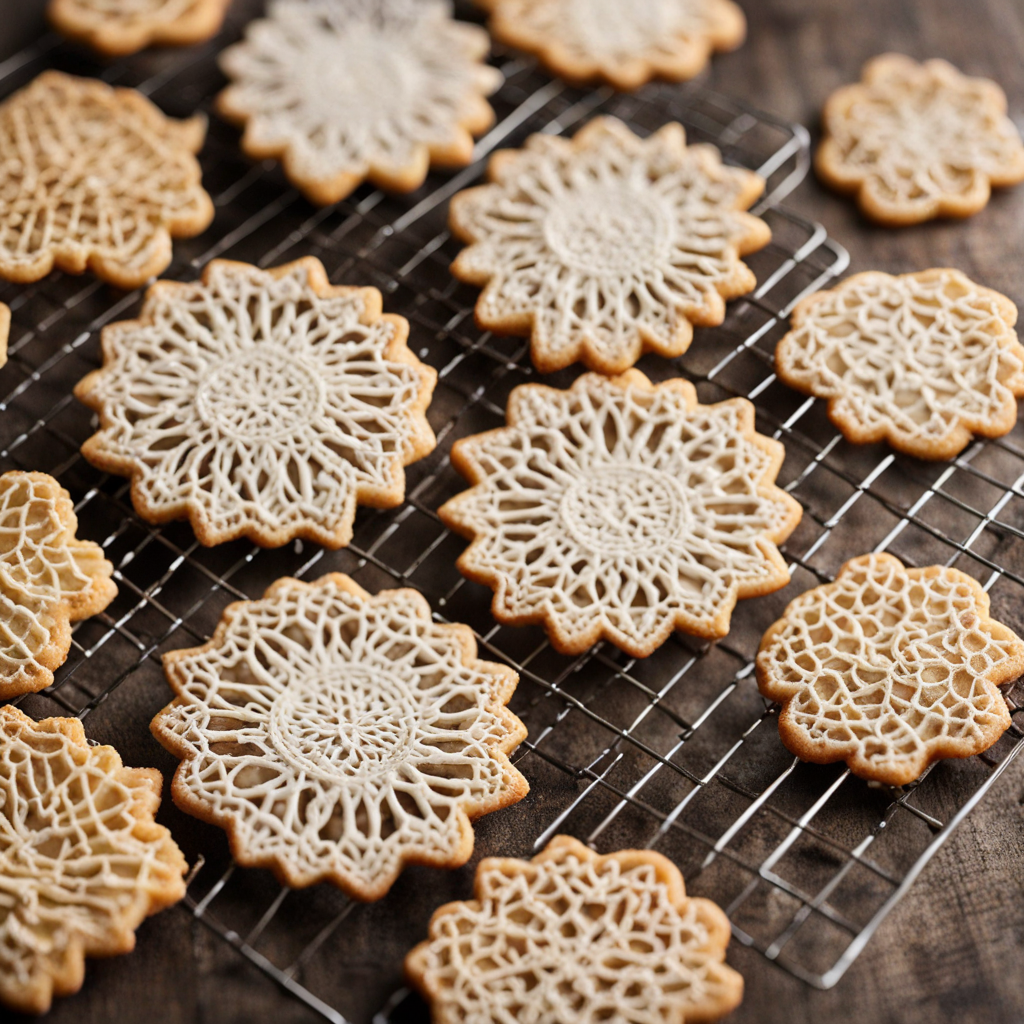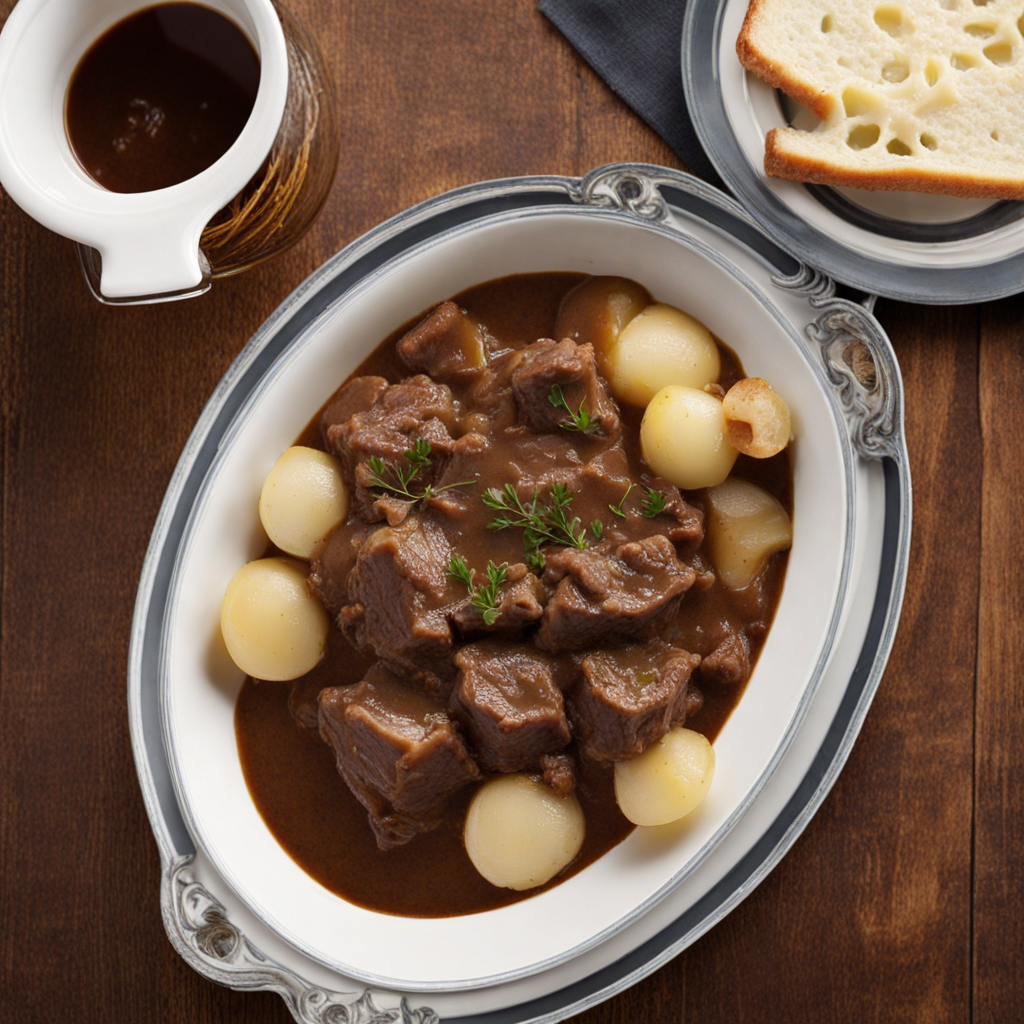Waterzooi
Waterzooi is a traditional Belgian dish that beautifully encapsulates the country’s culinary heritage, particularly from the region of Flanders. This rich and comforting stew typically features a base of chicken or fish, simmered gently in a broth made from vegetables, cream, and sometimes egg yolks. The name 'waterzooi' itself translates to 'water zoo,' hinting at the variety of ingredients that can be added, creating a delightful medley of flavors and textures. The dish is often enhanced with aromatic herbs such as parsley and thyme, which contribute to its vibrant taste profile, making each bite a warm embrace of comfort and nostalgia. The preparation of Waterzooi is as much an art as it is a science. The key to a perfect Waterzooi lies in the slow cooking process, allowing the natural flavors of the meat or fish to meld harmoniously with the broth. Seasonal vegetables like carrots, leeks, and potatoes are typically included, adding not only nutrition but also a pop of color to the dish. The creamy sauce, enriched with a touch of white wine, elevates the dish further, making it a luxurious meal perfect for family gatherings or special occasions. Each region in Belgium may have its own twist, incorporating local ingredients that reflect the area’s culinary style. Serving Waterzooi is an experience in itself, often accompanied by crusty bread or fluffy rice, which helps soak up the flavorful broth. The presentation is rustic yet inviting, as the dish is typically served in a large pot or deep bowl, allowing diners to appreciate the vibrant colors of the vegetables and the creamy richness of the sauce. With its delightful combination of flavors, textures, and aromas, Waterzooi is not just a meal; it’s a celebration of Belgian culture and a testament to the simple, yet profound joy of good food shared with loved ones.
How It Became This Dish
Waterzooi: A Culinary Emblem of Belgium’s Heritage Waterzooi, a dish steeped in the rich culinary traditions of Belgium, is a testament to the country’s diverse gastronomic landscape. This comforting stew, typically made with fish or chicken, is characterized by its creamy broth, fresh vegetables, and a touch of herbs. Its name, derived from the Flemish word “waterzooien,” translates to “to boil in water,” reflecting the dish’s simple yet hearty preparation method. To fully appreciate Waterzooi, one must delve into its origins, cultural significance, and the evolution it has undergone through the centuries. Origins Waterzooi’s origins can be traced back to the coastal regions of Flanders, particularly the city of Ghent, where it is believed to have been first prepared in the 19th century. The dish emerged in a time when the abundance of fish from the North Sea significantly influenced local cuisine. Ghent, being a bustling trade hub, saw the convergence of various culinary influences—both local and international—which shaped the food culture of the region. The earliest versions of Waterzooi were primarily fish-based, utilizing the fresh catch of the day. It is said that the dish was originally made with eels, a popular local fish, and was enjoyed by both the working class and the wealthy. As it gained popularity, the dish began to evolve, incorporating various other ingredients as cooks experimented with flavors and textures. The addition of chicken later became common, reflecting changes in agricultural practices and availability of ingredients. Evolution of the Dish By the late 19th and early 20th centuries, Waterzooi had firmly established itself as a beloved dish in Belgium. The recipe began to diversify, with cooks adding seasonal vegetables such as carrots, leeks, and potatoes, which were abundant in local markets. The broth, traditionally made with water, was enriched with cream, egg yolks, and herbs, creating a luxurious, velvety texture that differentiated Waterzooi from other stews. The dish’s transformation was also influenced by the rise of Belgian cuisine as a distinct identity in the culinary world. As Belgium gained recognition for its culinary prowess, Waterzooi became a symbol of national pride. It was showcased in restaurants and became a staple in households, celebrated for its comforting qualities and the warmth it invoked in family gatherings. Cultural Significance Waterzooi is more than just a dish; it embodies the spirit of Belgian hospitality and the importance of communal meals. Traditionally served in a large pot, it invites sharing among family and friends, fostering bonds and conversations over hearty servings. This communal aspect of dining is deeply rooted in Belgian culture, where meals are an occasion for togetherness. Moreover, Waterzooi reflects the agricultural and fishing heritage of Belgium. The dish honors the local produce and seafood, celebrating the country’s rich natural resources. In a sense, it serves as a culinary narrative of the region—one that highlights the interplay between land and sea, and the seasons that dictate the availability of ingredients. In recent years, Waterzooi has also gained international recognition, becoming a culinary ambassador for Belgium. It is often featured in food festivals and gastronomic events, allowing chefs to showcase their creativity while staying true to the traditional roots of the dish. Chefs have adapted Waterzooi to include modern twists, such as using organic or locally-sourced ingredients, which resonates with the contemporary emphasis on sustainable and ethical eating practices. Regional Variations While Waterzooi is primarily associated with Ghent, regional variations have emerged, each with its own spin on the classic recipe. In the coastal regions, seafood Waterzooi may include shrimp, mussels, or other shellfish, further enhancing the dish's maritime flavors. In contrast, inland areas might lean towards chicken or duck, reflecting the agricultural bounty of the countryside. The use of herbs also varies, with some regions favoring dill, while others may opt for parsley or tarragon, adding distinct aromatic profiles to the dish. This regional diversity is a celebration of Belgium’s multifaceted culinary landscape, where local traditions and ingredient availability shape the food culture. Contemporary Adaptations In the modern culinary scene, Waterzooi continues to inspire chefs and home cooks alike. The rise of farm-to-table movements has encouraged a return to traditional cooking methods, with an emphasis on using fresh, seasonal ingredients. Contemporary interpretations of Waterzooi often focus on lighter versions of the classic recipe, incorporating more vegetables and reducing the creaminess of the broth. Innovative chefs have also experimented with flavor profiles, introducing elements such as saffron or citrus to elevate the dish. These adaptations reflect a broader trend in gastronomy, where chefs are not afraid to reinterpret classic dishes, infusing them with new life while honoring their heritage. In addition, as global palates expand, Waterzooi has found its way into the menus of international restaurants, introducing the dish to a wider audience. This globalization of Belgian cuisine has paved the way for an appreciation of its nuances, allowing Waterzooi to transcend its regional roots and become a symbol of Belgium’s culinary identity. Conclusion Waterzooi is an emblematic dish that encapsulates the heart and soul of Belgian cuisine. Its origins in the coastal city of Ghent, coupled with its evolution through the ages, speak to the resilience and adaptability of culinary traditions. As it continues to evolve in contemporary kitchens while remaining a cherished part of Belgian culture, Waterzooi stands as a flavorful reminder of the importance of community, heritage, and the simple joys of sharing a meal. Whether enjoyed in a bustling restaurant or a cozy home, Waterzooi remains a beloved testament to Belgium’s rich culinary history—a dish that continues to warm hearts and bring people together.
You may like
Discover local flavors from Belgium


